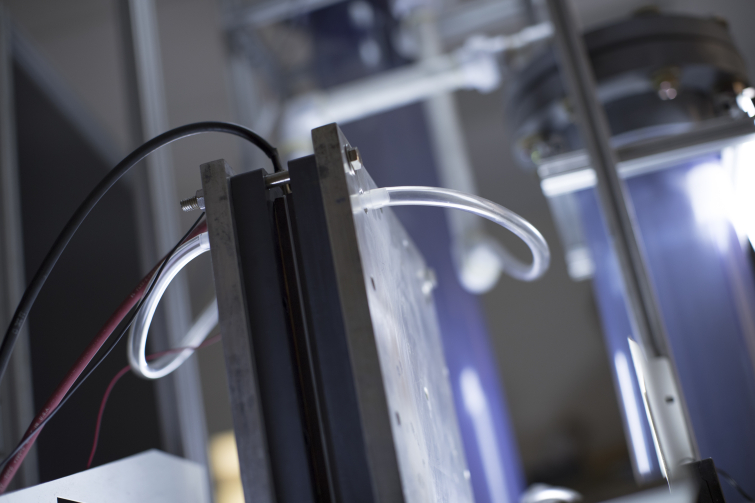Electrochemical Devices
The battery is probably the world’s most ubiquitous electrochemical device, and the most familiar. From our cars (even the standard combustion-engine kind) to our phones to a collection of other devices, batteries give us power on the move. But they’re far from the only electrochemical device the world relies on to run smoothly. In addition to building better batteries, our researchers are using electrochemistry to improve metals production, manufacture state-of-the-future microprocessors and advance green energy.
Electrochemical devices either generate electricity from a chemical reaction (like a battery) or use electrical energy to cause a chemical reaction (like a catalyst). Our researchers are making discoveries in both spheres to make advances in energy storage, manufacturing and more. They are designing batteries that can store and release intermittent forms of energy harvested from renewable sources like wind and solar. They’re lowering the cost of producing metals like titanium and aluminum—critical components for the aerospace and renewable energy industries. They’re developing more efficient catalysts for green energy systems and using electrolysis to improve production of the microprocessors that will power next-generation electronics. We collaborate with scientists from across the university through the Great Lakes Energy Institute, and our close ties with industry give our researchers the opportunity to work with corporate partners on solutions that meet the challenges of the real world.
Institutes, centers and labs related to Electrochemical Devices
Faculty who conduct research in Electrochemical Devices
Rohan Akolkar
Hoda Amani Hamedani

Uzi Landau

Chung-Chiun Liu
Heidi Martin











